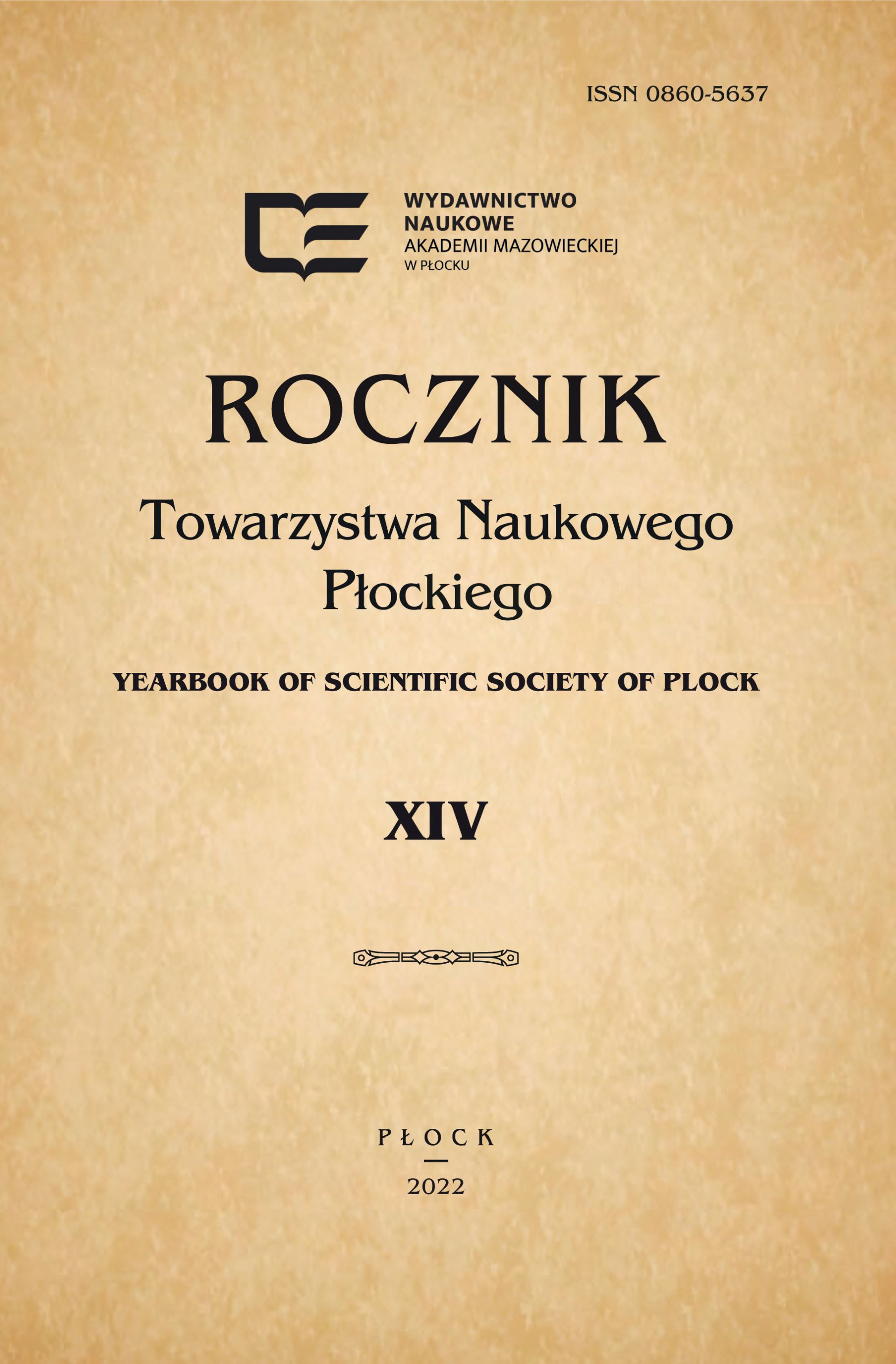Niewerbalne tak i nie w Polsce i w Grecji
DOI:
https://doi.org/10.19251/rtnp/2022.14(10)Słowa kluczowe:
gesty emblematyczne, gesty polskie, gesty greckie, niewerbalne przeczenie, niewerbalne potwierdzenie, niewerbalne tak, niewerbalne nieAbstrakt
Celem artykułu jest pokazanie różnych sposobów niewerbalnego potwierdzania i zaprzeczania w kulturze polskiej i greckiej oraz przedstawienie wyników badań porównawczych w tym zakresie. Opisane zostały różne ruchy głowy i rąk, mimika oraz elementy paralingwalne, ich kontekst użycia oraz znaczenie, jak również pochodzenie i funkcje m.in. skinienia lub kręcenia głową. Okazuje się, że wyniki badań stoją w sprzeczności z powszechnym stwierdzeniem, że Grecy potakują i przeczą inaczej lub przeciwstawnie do pozostałych Europejczyków – greckie potakiwanie jest zasadniczo zbieżne z polskim. Ponadto ukazane zostało bogactwo i wieloznaczność badanych komunikatów niewerbalnych oraz związane z tym ryzyko nieporozumień lub nieefektywnej komunikacji na gruncie międzykulturowym. Podjęta została także próba wyjaśnienia, dlaczego w badanych kulturach przyjęły się częściowo odmienne wzorce niewerbalnego przeczenia.
Bibliografia
Antoniou-Kritikou, Ioanna (2008) Epikoinono sta ellinika. Athina: Grammata.
Archer, Dane (1997) Unspoken Diversity: Cultural Differences in Gestures. [W:] Qualitative Sociology Vol. 20(1), 79-105.
Axtell, Roger E. (1991) Gestures. The Do’s and Taboos of Body Language Around the World. New York, Chichester, Brisbane, Toronto, Singapore: John Wiley & Sons, Inc.
Birdwhistell, Ray (1970) Kinesics and Context: Essays on Bodily Motion Communication. Philadelphia: University of Pennsylvania Press.
Cavicchio, Federica, Sotaro Kita (2013) English/Italian Bilinguals Switch Gesture Parameters when they Switch Languages. [W:] Cognitive Science Vol. 35, https://escholarship.org/uc/item/6tp989dh (data dostępu: 18. 01. 2022).
Darwin, Karol ([1872] 1988) [The Expression of the Emotion in Man and Animals. London: John Murray.] O wyrazie uczuć u człowieka i zwierząt. Warszawa: PWN.
Efron, David ([1941] 1972) [Gesture and Environment: A Tentative Study of the Spatio-temporal and Linguistic Aspects of the Gestural Behavior of Eastern Jews and Southern Italians in New York City, Living Under Similar as Well as Different Environmental Conditions. New York: King’s Crown Press, Morningside Heights] Gesture, Race and Culture. The Hague, Paris: Mouton.
Eibl-Eibesfeldt, Irenäus (1973) The expressive behaviour of the deaf-and-blind born. [W:] M. von Cranach, I. Vine (red.), Social communication and movement. New York: Academic Press.
Eibl-Eibesfeldt, Irenäus (1987) Miłość i nienawiść. Warszawa: PWN.
Granström, B., House, D. (2006) Measuring and modelling audiovisual prosody for animated agents. [W:] Proceedings of Speech Prosody 2006, Dresden, https://www.speech.kth.se/prod/publications/files/1286.pdf (data dostępu: 07. 02. 2022),
https://www.isca-speech.org/archive_v0/sp2006/papers/sp06_117.pdf (data dostępu: 07. 02. 2022).
Gravano, Agustín, Stefan Benus, Hector Chavez, Julia Hirschberg, Lauren Wilcox (2007) On the role of context and prosody in the interpretation of “Okay”. [W:] Proceedings of the 45th Annual Meeting of the Association for Computational Linguistics 2007, Prague, https://www.researchgate.net/ publication/220874706_On_the_role_of_context_and_prosody_in_the_ interpretation_of_’okay’ (data dostępu: 02. 02. 2022).
Helweg-Larsen, Marie, Stephanie J Cunningham, Amanda Carrico, Alison M. Pergram (2004) To nod or not to nod: An observational study of nonverbal communication and status in female and male college students. [W:] Psychology of Women Quarterly 28, 358–362.
Hockey, Beth Ann (1993) Prosody and the role of okay and uh-huh in discourse. [W:] M. Bernstein (red.) Proceedings of ESCOL ‘92, 128-136, https://wenku.baidu.com/view/5d5c9dc458f5f61fb73666bc.html (data dostępu: 03. 02. 2022).
Jakobson Roman (1989) «Tak» i «nie» w mimice. [W:] Maria Renata Mayenowa (red.) W poszukiwaniu istoty języka 1. Wybór pism. Warszawa: PIW, 85-91.
Jarząbek, Krystyna, Antoni Cygan (1994) Gestykulacja i mimika: słownik. Katowice: Wydawnictwo Śląsk.
Johnson, Harold G., Paul Ekman, Wallace V. Friesen (1975) Communicative Body Movements: American Emblems. [W:] Semiotica Vol. 15, 335-353.
Karpiński, Maciej, Silvia Bonacchi (2014) Remarks about the use of the term ‘multimodality’. [W:] Journal of Multimodal Communication Studies
Kendon, Adam (1992) Some Recent Work from Italy on Quotable Gestures (‘Emblems’). [W:] Annual Review of Anthropology, Vol. 26, 109-128.
Kendon, Adam (2004) Gesture: Visible Action as Utterance. Cambridge: Cambridge University Press.
Kozak, Katarzyna (2007) Polska frazeologia gestu: Od informacji somatycznej do idiomu. [W:] Etnolingwistyka 19, 253–265.
Kraśnicka-Wilk, Izabela, Gembalczyk, Sonia (2018) Multimodalne TAK. [W:] Language, Mind, Culture, Society, 2, 60–80, https://doi.org/10.32058/LAMICUS-2018-002 (data dostępu: 18. 01. 2022).
Malisz Zofia, Maciej Karpiński (2010) Multimodal aspects of positive and negative responses in Polish task-oriented dialogues. [W:] Speech Prosody 2010, paper 888, https://www.isca-speech.org/archive/pdfs/speechprosody_2010/malisz10_speechprosody.pdf, (data dostępu: 20. 01. 2022).
Matsumoto, David, Hyisung C. Hwang (2013) Cultural Similarities and Differences in Emblematic Gestures. [W:] Journal of Nonverbal Behaviour Vol. 37(1), 1-27.
McNeill, David (2005) Gesture and Thought. Chicago: University of Chicago Press.
Morris, Desmond, Peter Collett, Peter Marsh, Marie O’Shaughnessy (1981) Gestures: Their Origin and Distribution. London: Triad Granada.
Morris, Desmond (1977) Manwatching: A field-guide to human behavior. London: Jonathan Cape Ltd.
Morris, Desmond (1994) Bodytalk: A World Guide to Gesture. London: Jonathan Cape Ltd.
Papas, William (1999) Instant Greek. How to Communicate in Greek as Quickly as You Can Twist Your Wrist!. Portland: Chetwynd Stapylton Inc.
Payrató, Lluís (1993) A Pragmatic View on Autonomous Gestures: A First Repertoire of Catalan Emblems. [W:] Journal of Pragmatics Vol. 20, 193-216.
Ružičková, Eva (2001) Picture Dictionary of Gestures. American, Slovak, Japanese and Chinese. Bratislava: Univerzita Kamenského.
Seyfeddinipur, Mandana, Marianne Gullberg (2014) From gesture in conversation to visible action as utterance. [W:] Mandana Seyfeddinipur, Marianne Gullberg (red.) From Gesture in Conversation to Visible Action as Utterance. Amsterdam, Philadelphia: John Benjamins Publishing Company, 1–12.
Sparhawk, Carol M. (1978) Contrastive Identificational Features of Persian Gesture. [W:] Semiotica Vol. 24, 49-86.
Szczepaniak, Agnieszka (2017) Gesty emblematyczne w międzykulturowej komunikacji niewerbalnej. Polsko-grecko-brytyjskie studium porównawcze i gestownik. Kalisz: Kaliskie Towarzystwo Przyjaciół Nauk, Wrocław: Uniwersytet Wrocławski, SWPS Uniwersytet Humanistyczno-Społeczny.
